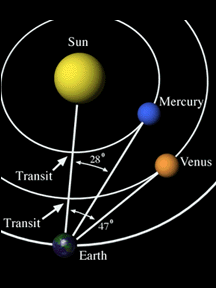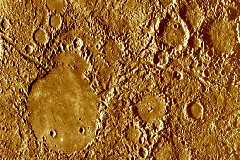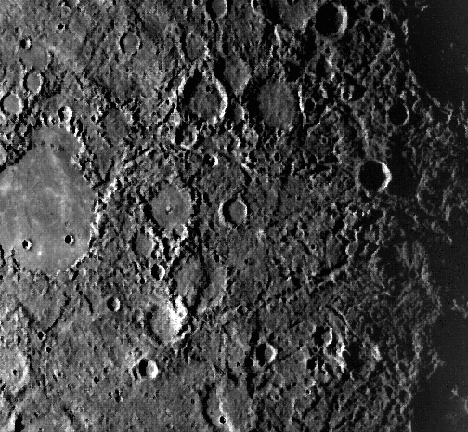

http://discovery.nasa.gov/messenger.html
innermost planet - .4 AU
Mass - only 5% of Earth's
highly ellipical orbit
40% vs 4% Earth

http://mac01.eps.pitt.edu/courses/GEO0870/mercury/mercurymotion.gif
long believed to be in synchronous rotation - Doppler radar has changed that belief
59 day sidereal rotation
it has an 88 day revolution so each sidereal day is 2/3 of the year
188 day solar rotation
so each solar day is two Mercury years long
It is a morning or evening "star" never more than 28° away from the sun ~two hours before or after sunrise

6% which is low (100% is everything) and about the same as the Moon (Why is the moon
so bright?)
We know its angular diameter, its period - we can calculate its mass. Then we can
determine its denisty

http://observe.arc.nasa.gov/nasa/ootw/1999/ootw_991013/ob991013.html

http://observe.arc.nasa.gov/nasa/ootw/1999/ootw_991013/ob991013_more5.html

http://www.ctuc.asn.au/planetarium/SolSyst/Mercury.htm
